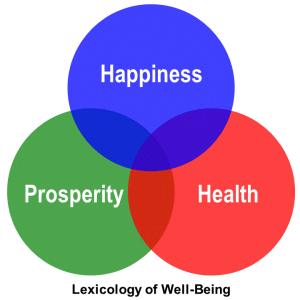The following is a guest post from Ed Burghard. Ed has had a long and distinguished career at Procter & Gamble where he was named a Harley Procter Marketing Director, the highest honor for a P&G marketer. He retired from P&G and now dedicates his time to his passions including his wife, his fitness, and www.StrengtheningBrandAmerica.com. Enjoy his guest post and feel free to comment below.
If you would like to submit a guest post, please use the Contact page to submit or inquire. Enjoy…
+ + + + + + + + + + + + + + + + +
How Big is Your Nut?

Actually, the real question is – How big a nut do you need to retire? It is one of the most relevant, scariest and controversial questions retirees (or retiree wannabees) need to ask and answer in order to be confident that their retirement doesn’t turn into a nightmare.
Before you read further, I need to provide full disclosure. I am not a financial consultant, nor am I an expert in personal finance or retirement planning. I am simply a guy who is retired and has had to figure out how to blaze a personal path through the complicated maze of unclear and often conflicting information to answer the question.
I have seen several ways of trying to determine how big a nut you need to enjoy a desired quality of life throughout your retirement. The literature will tell you that the “right” answer depends on how costly that “quality” is, how your investments perform, how protected you are against catastrophic financial events, what your risk tolerance is, what your personal priorities are … etc. etc. Net, the experts generally agree that there is no real “right way” to calculate how big a nut you really need to retire. With the above in mind, here is a simple way I arrived at an answer that makes me sleep well at night.
- Decide, in general, how much money you need pre-tax to live on per year. Some advisors suggest 80% of your current (or last) annual salary is a good starting point. But, you may decide you want to actually spend 110% of your salary. The important thing is to pick a number and be realistic about it.
- Divide the number by .03 (3%) to estimate just how big a nut you need. For example, if you decided you need $100,000 gross per year to live in the style you desire, then your nut will need to be roughly $3.4 million (excluding the value of your home).
From this point you can make any refinements you want to increase the precision of your estimate. For example, you could assume a revenue stream from social security as a way to cover your required nut.
Note, in my approach inflation and earnings on investment are considered a wash. Admittedly this is over simplistic.
Okay, financial consultants and retirement counselors will have a field day picking apart my approach.  They will rightly point out that 1) to achieve a 90% probability of achieving a retirement income goal with a 30-year time horizon a 40% equity based portfolio would have an initial withdrawal rate of 2.8% [based on Monte Carlo testing – see here for link] and 2) the way I look at the question will likely result in having money left for an inheritance. But, in a world where you no longer have a reliable inflow of cash to offset your cost of living, and the life expectancy of retirees is increasing, I think my conservative way of answering the question makes sense.
They will rightly point out that 1) to achieve a 90% probability of achieving a retirement income goal with a 30-year time horizon a 40% equity based portfolio would have an initial withdrawal rate of 2.8% [based on Monte Carlo testing – see here for link] and 2) the way I look at the question will likely result in having money left for an inheritance. But, in a world where you no longer have a reliable inflow of cash to offset your cost of living, and the life expectancy of retirees is increasing, I think my conservative way of answering the question makes sense.
To be clear, the answer to how big a nut do you need to consider retiring is not the same thing, as answering the question of – What should my actual annual draw down rate be? In all probability you will draw down at a variable rate based on what is going on in your life at the time. Once you are in a world of more money going out than coming in, it becomes very important to assess your draw down percentage per year in the context of your portfolio performance and current market conditions. But, the truth is that if you don’t have a big enough nut to start with, the exercise is moot.
At a minimum, I hope my experience is helpful. Ideally, I hope it encourages you to explore deeper what the right answer might be for you. After all, nothing impacts your enjoyment in retirement quite like the size of your nut.
Ed Burghard




